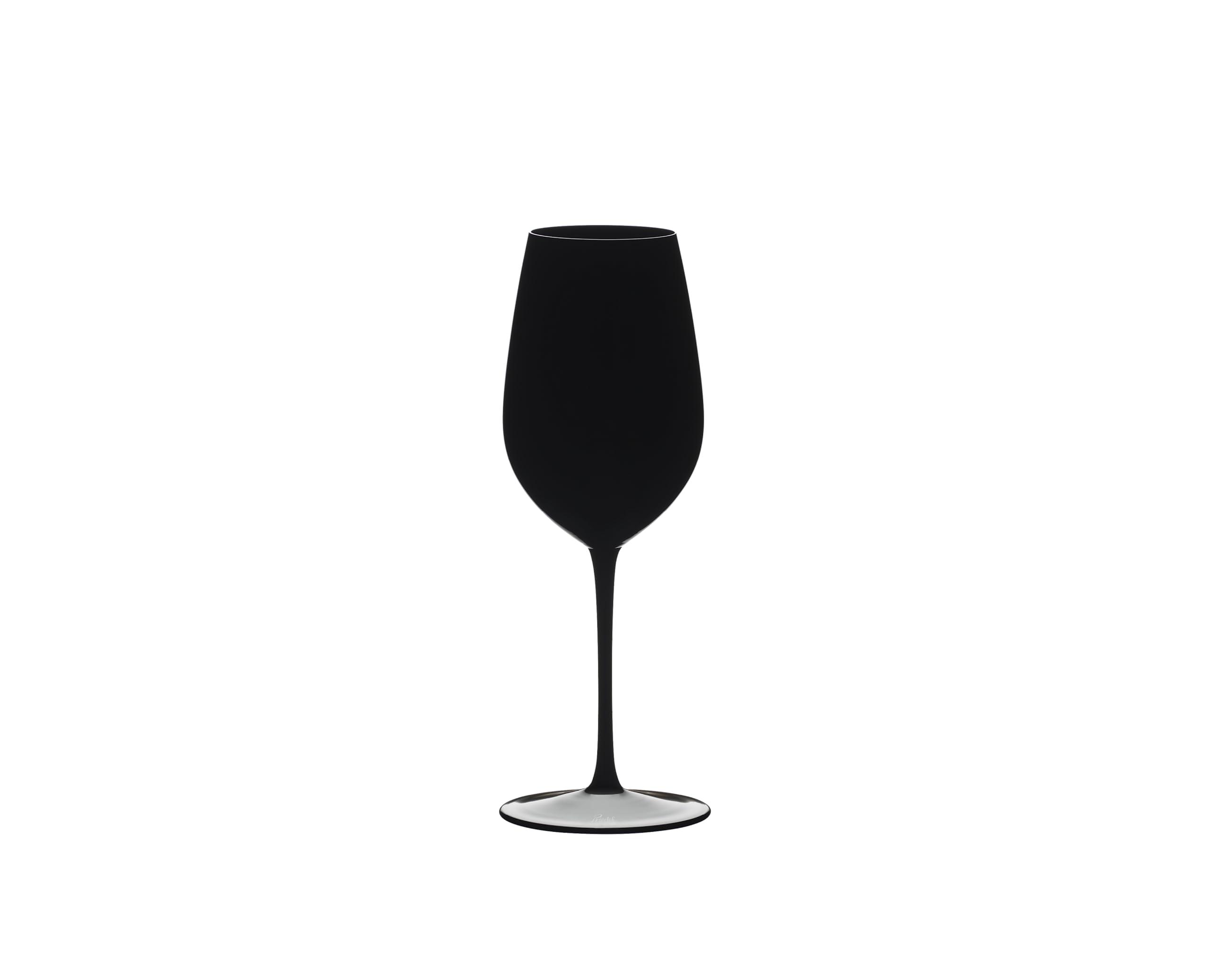Description
- Black opaque blind tasting glass from riedels sommeliers line
- Crafted of full-lead crystal; riedels only black glass
- Hand-made and mouth-blown in Austria by renowned glassmakers
- Specially designed to hide the color of wine, but usable as an elegant set
- Measures 8-7/8 inches tall; full capacity 13-3/8 ounces; wash by hand
Amazon.com
Sometimes even a wine connoisseur can't tell the difference between a red and a white wine when the color is obscured. This all-black, opaque glass from Riedel's renowned Sommeliers line hides the color of a wine to keep a tasting blind. Riedel's only black glass, the blind taster makes an excellent gift for an oenophile, a fun gift for a group of friends with which to experiment, or starts an elegant set.
Made in Austria by acclaimed glassmakers, the Sommeliers line is mouth-blown of 24-percent lead crystal for exceptional clarity and brilliance. While clarity is not an issue with the blind tasting glass, the fact that the glass is made by hand gives it a delicacy and fine balance that would otherwise be missing. This particular glass measures 8-7/8 inches tall, holds 13-3/8 ounces at full capacity, and comes handsomely packaged in a single gift tube. Sommeliers crystal should be washed by hand to ensure longevity and to keep the glass surface free of detergent residue that can affect wine taste. --Ann Bieri
Product Description
Designed for blind tastings, this Riedel sommeliers sleek "blind-blind " black glass tasting glass conceals the wine for successful taste testing.
From the Manufacturer
A Glass Is Not Just a Glass
The Content Determines the Shape
Riedel's belief when it comes to develop a shape is that design ideas are not born on a drawing board but shaped by trial and error with the help and support of the worlds greatest palates. A person interested in wine is led by color, bouquet, and taste. He often does not consider the glass--used as an instrument to convey the message of the wine. Over the years we have acquired some interesting scientific explanations as to why the shape of a glass so influences the bouquet and taste of alcoholic beverages.
The first discovery was made while enjoying wine. The same wine seemed completely different, when served in a variety of glasses--so much so that experienced connoisseurs were made to believe that they were tasting a different wine. In the next step, Riedel was able to determine shapes in which the wine seemed to improve. The grape variety is the key factor determining the relationship between fruit, acidity, tannin, and alcohol in wine. We started to recognize the complicated role played by size and shape in conveying the message of a fine wine.
The Influence of Size and Shape on Alcoholic Beverages
Bouquet
The quality and intensity of aromas are determined by the personality of a wine and the relative affinity of the glass shape. Bouquet can only develop in a range of temperatures. Low temperatures temper the intensity, whereas high temperatures push mainly alcoholic fumes. When describing the importance of the glass shape we assume that the right serving sizes (white wine: 2-3 ounces; red wine: 3-5 ounces) and temperatures are respected. When wine is poured out, it starts to evaporate and the aromas quickly fill the glass in layers according to their density and specific gravity. The lightest vapors are at the rim, the heaviest on the bottom. Consequently the size and the shape of the glass can be fine-tuned to the typical aromas of a grape variety: The lightest, most fragile aromas are those which resemble flower and fruit aromas. Slender, egg-shaped glasses emphasize this kind of aroma. The middle is filled with green vegetal aromas and earthy mineral components. The heaviest aromas are those of wood and alcohol. When swirling the glass, the wine moistens additional surface which increases the evaporation and intensity of the aromas. However, it does not allow layers of bouquet to blend together. It is for this reason that the different qualities of aroma noted in a variety of glasses are amazing. (The same wine may have fruit aromas in one glass and green and vegetal herbiness in another). To eliminate this effect, you would have to move the layers vertically and shake the glass. Only then would you discover the same bouquet in all glasses!
Experienced tasters rely on their olfactory talents more than their palates to determine the provenance of the sample or the grape variety in blind tastings. Very large glasses with a capacity of more than 25 ounces allow you to sniff through the layers of bouquet by inhaling extremely gently and consistently for more than ten seconds. You can smell through the fruit aromas to the alcohol fumes.
Palate
We cannot dictate firm rules over personal preferences, though our advice may provide valuable guidelines. Years of experience have shown that 90 percent of wine lovers approve of the suggestions made by Riedel. Physical movements and adjustments are controlled subconsciously. The shape of the glass forces the head to position itself in such a way that you drink and do not spill.
Wide open glass shapes require us to sip by lowering the head. Narrow rims roll the head backwards and the liquid flows because of gravity. This delivers and positions the beverage to different zones of the palate. Dr



